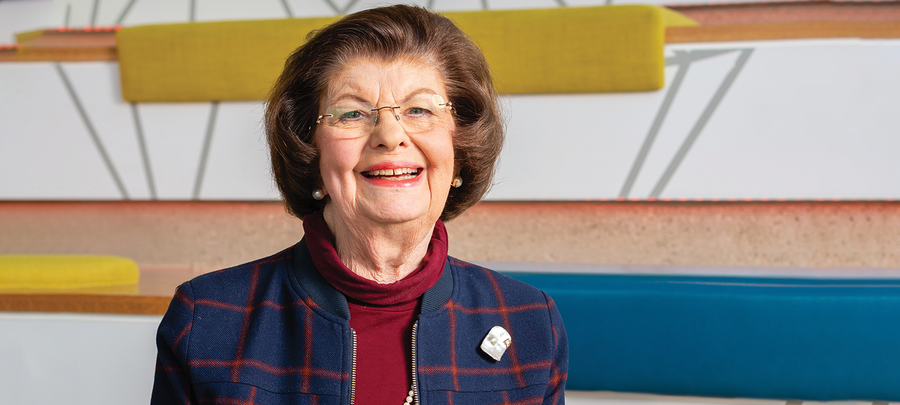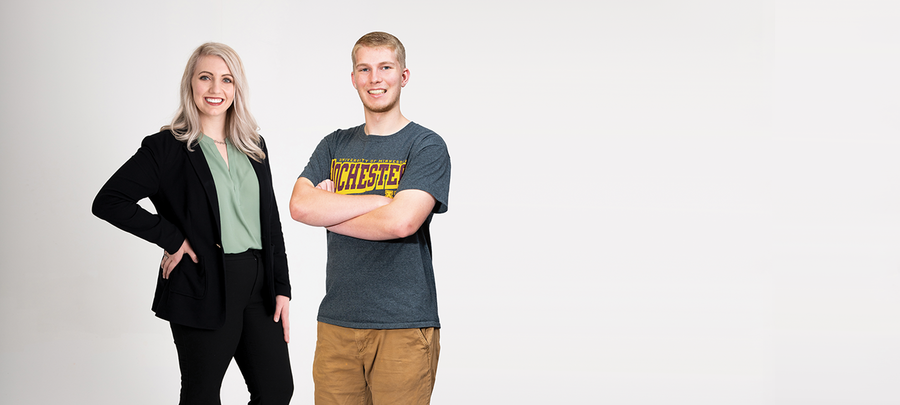
The Power of Mentorship
For Ryan Colburn, a junior health sciences major, the guiding force behind his decision to attend the University of Minnesota Rochester (UMR) and pursue a career in health care was his childhood battle
with cancer.
As a four-year-old, Ryan was diagnosed with Burkitt's Lymphoma and spent a summer enduring chemotherapy; thankfully, he responded well to the treatment and, within a year, was cancer-free. Throughout his bout with cancer, Ryan experienced firsthand the compassionate care, support and life-saving treatments provided by an array of medical professionals. Their dedication to caring for others showed Ryan at a young age the impact health care professionals can have on someone’s life.
Originally from Stillwater, Minnesota, Ryan entered UMR as an undergraduate in the Bachelor of Science in Health Sciences (BSHS) program focused on Patient Care. However, during his freshman year, Ryan came to realize that the patient care side of health wasn’t exactly for him. As he explored other areas of interest and career pathways in health care, he enrolled in Professor Ballam’s Introduction to Statistics course and his interest was further solidified when he took Professor Ayebo’s biostatistics course the following semester. These classes helped Ryan discover a latent interest in health informatics, and he now has his sights set on a career in biostatistics or research.
The UMR Alumni Mentorship Program was key to helping Ryan refocus his career path. Launched in 2020, the mentorship program connects Raptor alumni with current UMR students who share similar academic or professional areas of interest.
In the mentorship program, Ryan was paired with Cassie Kersten '16, a BSHS alumna currently working as a senior consultant with Booz Allen Hamilton supporting the development and facilitation of medical readiness training and exercises for federal agencies in Atlanta, Georgia. Prior to her time at Booz Allen, Cassie worked for the Centers for Disease Control (CDC) on a COVID-19 response team, and as a COVID-19 epidemiologist assistant contractor with the Georgia Department of Public Health. And in 2020, Cassie earned a Master of Public Health (MPH) from Emory University with a focus on Global Epidemiology.
Through the mentorship program, Cassie shared with Ryan that as a student at UMR, she participated in Mayo Clinic’s Summer Undergraduate Research Fellowship (SURF) program. The 10-week long program provides undergraduate students the opportunity to work alongside Mayo Clinic faculty, postdoctoral fellows, and graduate and medical students in real-world settings on real-world research. Knowing of Ryan’s budding interest in research, Cassie encouraged him to apply for the sought after and highly competitive SURF program; she also provided him a letter of recommendation.
This past summer, Ryan completed the 10-week SURF program, where he was placed in the Multimodal Neuroimaging Laboratory led by Dr. Dora Hermes Miller, who works with epilepsy patients measuring their brain activity. This experience provided Ryan the hands-on opportunity to work alongside graduate students collecting and analyzing patient data, with the goal of understanding how the different areas of the brain are connected and how they work together to process information.
In pursuing the SURF program, Ryan utilized the Alumni Mentorship Program and Cassie’s guidance to connect with health care professionals and expand his network into the health care field. In fact, Cassie’s own career acted almost like a map for Ryan.
“Cassie’s been a really good guide,” says Ryan. “Her career pathway provided me with an example for how you need to make the best decision when you’re at a fork in the road. Her journey from UMR to Mayo Clinic’s GERP [Graduate Research Employment Program] to getting her master’s degree, and now consulting for a private firm has shown me how your route doesn’t have to be traditional, it just needs to be what’s best for you. Her insight and perspective have been very valuable.”
While the Alumni Mentorship Program officially concluded at the end of the academic school year, both Cassie and Ryan believe it’s important to maintain their connection. Ryan still doesn’t know the exact career path he will take, and he intends to seek Cassie’s advice and mentorship going forward.
“I think one of the most beneficial parts of the program is just knowing you have people to reach out to,” Cassie says.
Cassie’s interest in the Alumni Mentorship Program grew out of her own experience with mentors as an undergraduate. While she was a student at UMR, several faculty members served as mentors, helping her home in on what she wanted out of a career. Today, Cassie continues to lean on those mentors and calls many of them friends.
“For me, having good mentors has always been incredibly important, so it was something that I wanted to do to give back,” Kersten says. “Mentors in my life have always made such a strong, positive impact.”
Cassie encourages other UMR alumni to participate in the Alumni Mentorship Program as a way to connect with current students who might not yet have mentors in their desired field and to pass along their knowledge and input to the next generation of Raptors.
Thanks to an introduction provided by Cassie, Ryan was able to sit down for an informational interview recently with a former classmate of Cassie’s who now works in the biostatics field. This meeting allowed Ryan to explore even further what potential opportunities exist in health informatics and research.
“There are so many people you can get to know even through one person,” Ryan says.
Ryan believes his experience in the UMR Alumni Mentorship Program has been fruitful and one that will have a far reaching impact on his career and professional pursuits. Even better, given the positive experience he’s had, Ryan intends to become an alumni mentor after graduating.
“I think that this relationship and program really helped me get my foot in the door at Mayo Clinic, and I want to be able to give back when my time comes,” says Ryan. ■
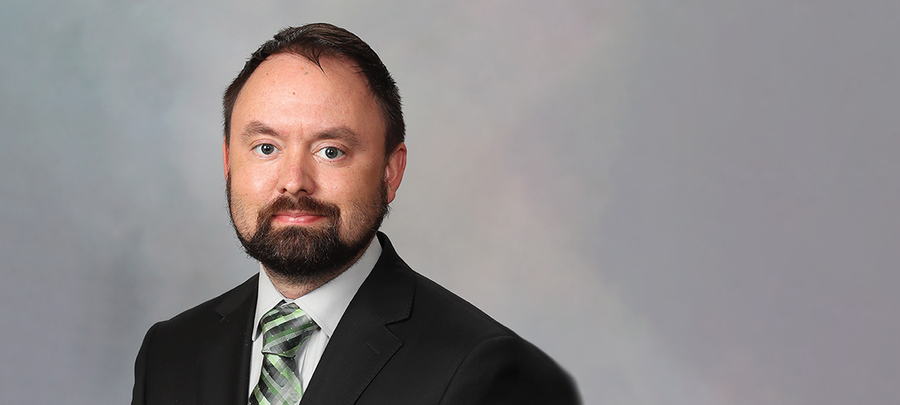
Q&A with Timothy L. Kline, PhD
Bioinformatics and Computational Biology (BICB) Graduate ‘13
How did you arrive at the BICB program? I was a PhD student in Electrical and Computer Engineering at the University of Minnesota working with Dr. Jian-Ping Wang. I ended up taking a job at Mayo Clinic and completing my Masters in Science in Electrical and Computer Engineering. I then changed into the BICB program and worked with Dr. Erik Ritman (at Mayo Clinic) on my Dissertation.
What was your program focus? Medical Imaging.
For those unfamiliar with BICB, how would you characterize its approach to graduate work? The BICB program is amazing. It is very flexible, allowing you to take many courses well suited to your academic needs.
What is your current role? Assistant Professor and Artificial Intelligence Scientist in Radiology at Mayo Clinic.
How do you use your PhD? I use the skills I acquired from my PhD on a daily basis. I currently have a funded research program through both internal and external grants. I am focused on machine learning and artificial intelligence models in the area of medical imaging.
What advice do you have for others interested in Bioinformatics? I would encourage others to explore the wide range of areas that are available within Bioinformatics. It is an exciting area and having the skills to speak from both the biology/basic science side, as well as the computational/informatics side, is incredibly useful. I have been fortunate to have established many collaborations since receiving my PhD.
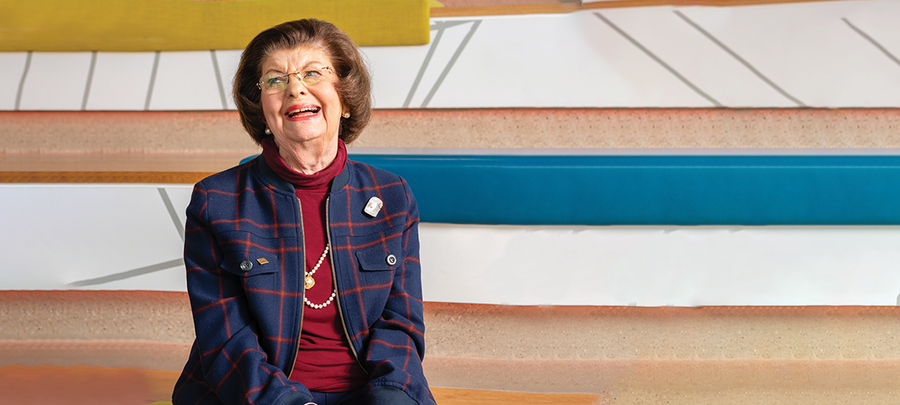
Marilyn Stewart: A Lasting Legacy
“This story is all about partnerships. Partnerships with people who cared, people who wanted higher education; the community, fundraising and people who may not themselves have had opportunities for higher education, but could see the importance of it for others.”
– Marilyn Stewart
Marilyn Stewart and the Rochester Higher Education Development Committee (RHEDC) were instrumental in turning the idea of bringing a University of Minnesota campus to Rochester into reality. And while this story is about partnerships, it’s also about vision, the creation of something yet unseen; it’s about courage, and stepping out and forward, even in the face of adversity. It’s a story about the importance of women not only being present at the table, but of being leaders; it’s about the power of women lifting other women up, and men coming alongside women as equal partners. It’s a story about a lasting legacy that will continue to enrich our community for decades
to come.
The Vision
“We worked for 20-plus years to get a branch of the University of Minnesota in Rochester,” says Marilyn. “We felt that the third largest city in Minnesota—home to Mayo Clinic, the largest employer in Minnesota, and IBM’s presence as a major patent center—needed to have a four-year university. But we didn’t want to duplicate the state college model with a million different majors. We wanted to focus specifically on research available through the University of Minnesota and pair it with the science and technology that was already here alongside medicine and entrepreneurship.”
While many people over the years thought that Rochester needed a four-year university, there was certainly no urgency and plenty of opposition to the idea ever getting off the ground and taking flight. There was also pressure from those at the state level who wanted to maintain the status quo, pushing for growth of existing educational institutions in the area and not the establishment of an entirely new campus.
According to Marilyn, the direction of higher education in Rochester had to be driven by needs, not the constraints of what already was. “What would the community need? I was appalled that the men on the Chamber board didn’t seem to take seriously how much the town needed this.” At that time, the 1970s and early 1980s, women were very rarely included or absent altogether from the committees and leadership circles where decisions for the community were being made.
So, Marilyn did what she had so often done throughout her career: She forged a new path with her biggest supporter by her side, her husband, Dr. John “Jack” Stewart, DDS. “I was liberated from day one because I was appreciated and supported by him. Whatever I chose to do, Jack was right behind me and beside me. He was the very best partner.”
With Jack’s full support, encouragement, and sometimes more than a little nudging, Marilyn became the voice at many of the tables that had previously been reserved for men only. “I have a history of being first at stuff: first woman president of the Rotary Club, first woman president of the Minnesota Association of Realtors, first female serving as the Chair of the Rochester Chamber of Commerce.”
Through these firsts, Marilyn joined FutureScan 2000, a joint effort between Mayo Clinic, IBM, the City of Rochester, Olmsted County and the Chamber of Commerce to guide the direction of the greater Rochester area, both economically and as a community. As a member of the Chamber, Marilyn served on the initial steering committee, and made the case that the need for higher education was too great to ignore. FutureScan agreed that higher education needed to be a priority, and included it as part of their final plan. From FutureScan’s work, the Greater Rochester Area University Center (GRAUC) was formed, and thus began the long, arduous, meetings-filled process to raise support for a university in Rochester. In 1999, GRAUC was at last able to get the Minnesota state legislature to approve a bill that would allow the University of Minnesota to establish a campus in Rochester. However, the legislation didn’t contain any funding. Dr. Robert Bruininks, President of the University of Minnesota (2002–2011), was very supportive of a Rochester campus, but told Marilyn, “It’s not going to be easy. It takes a lot of money.”
GRAUC, with Marilyn as a driving force, went to work on getting funding, securing a portion of Rochester’s local sales tax revenue to go into a fund for higher education purposes. Over the years, this fund slowly grew, and became a portion of the seed money needed to make the University of Minnesota Rochester
a reality.
Courage: Stepping Out and Stepping Forward
“We had the right governor at the right time,” Marilyn says. “Governor Tim Pawlenty (2003–2011) came to Rochester in 2005 to give his State of the State address, and he said, ‘We are going to have a four-year university in Rochester. I’m going to appoint a committee to develop plans.’ And he did.”
Governor Pawlenty’s RHEDC committee needed community leadership. Marilyn recalls: “Jack wanted me to apply. I told him, ‘I don’t need another job!’ He said, ‘You have to apply, you have the experience and the responsibility.’ The night before the application was due, I was sitting at the kitchen island typing the application. I sent it in. Then they called me for an interview. I made Jack drive me because I didn’t have time to think about what to say during the interview until we got in the car.”
“During the interview, they said, ‘I don’t know how we’re going to select people for this committee. We have so many good applicants.’ I said, ‘I will give you some names I think you’d better choose: Dr. Wendy Shannon (Superintendent of Byron Public Schools), Drew Flaada (IBM’s collaborator with Mayo Clinic) and Jim Clausen (IBM).’ I got back to the car and said, ‘I think I just got the royal kiss off!’ I didn’t expect to
be selected.”
“At the end of that week, I got a phone call from the governor’s office asking if I would be interested in serving. They told me, ‘The governor wants you to chair the committee. Will you do it?’ So I said yes.”
“The people who were selected for the committee were the greatest group I have ever worked with. They were all leaders in their own areas, yet all working together toward this common goal. Eleven leaders working together was really special.”
“Once we delivered the report to the governor, I had to present it to the Board of Regents first, and then to the legislature. Jack came along to help me set up the PowerPoint. I knew I was going to get a lot of flack, but we had both Republicans and Democrats in the House and Senate supporting us. Senators Sheila Kiscaden (I) and Dave Senjem (R), and Representatives Bill Kuisle (R), Fran Bradley (R) and Randy Demmer (R) would come and sit behind me to support me while I gave my presentations. During the presentation to the legislature I said, ‘There is no other community in America that has set aside $11 million for higher education/a college branch. Now, I need $5 million to launch.’ We didn’t use all of the Governor’s RHEDC fund, so we rolled that in, and finally, the legislature voted to give us the operating funds.''
The vision had finally become a reality.
For Marilyn and RHEDC, the skyway space, while at first seemingly unconventional, was a strategic choice. UMR’s focus on health science and technology meant that the campus’ location in downtown Rochester in close proximity to Mayo Clinic was key. RHEDC members researched and visited downtown campuses in other cities, and ultimately moved forward with the space in University Square.
After the skyway space was secured in University Square, the University of Minnesota conducted a national search for UMR’s first chancellor. Dr. Stephen Lehmkuhle—an experienced university administrator—was appointed by the Board of Regents to tackle the unique challenge of establishing a fledgling health sciences-focused university. “Chancellor Stephen Lehmkuhle really led the way in teaching the community what UMR was about,” Marilyn recalls. “UMR’s inaugural class was 56 students who took a chance on us!”
Women Uplifting Women
Marilyn’s focus has always been on opening doors for women and promoting education.
Even when there was no guarantee that she would be part of the project or committee, Marilyn wanted to make sure there were women who would be. When she was on a committee, she made sure to appoint other women to work alongside her and collaborate with women leaders in their field.
Marilyn is quick to name dozens of women that she partnered with along the way, notably Dr. Patricia Simmons, a former University of Minnesota regent from Rochester, who helped guide Marilyn through the process of creating the Governor’s report and advocating for the establishment of a new U of M campus; and Amy Caucutt, who was instrumental in getting the attention of the legislature to approve the campus and who later wrote a book called Taking the Lead: Rochester Women in Public Policy, 1970–1990, which includes a chapter on Marilyn’s work to see a University of Minnesota campus succeed in Rochester. The book contains the stories of 24 other women leaders, including Dr. Wendy Shannon, state Senator Nancy Brataas (R), Dr. Claire Bender, Kathy Meyerle, Dr. Valerie Halverson Pace, Alison Good, Louellen Essex and current Chancellor Dr. Lori J. Carrell. While Marilyn was often the first woman in the room or at the table, she made sure she would not be the last.
A Lasting Legacy
What about UMR makes Marilyn most proud? “The way it’s growing. The recognition it has received for excellence in teaching and learning, and producing students who have equitable opportunities. That is so important. The educational attainment gap between underrepresented students and their white peers at UMR is nonexistent. This is a distinction that deserves a gold star. The Center for Learning Innovation (CLI), where faculty conduct research on teaching and learning, that is a very special thing. Finally, I believe UMR is doing a wonderful job in training Minnesota’s future health care workforce, and I look forward to an increased focus on technology in medicine.”
And what does she hope to see for UMR in the next 10 years? “Just keep growing. I would like to see a building on the corner of Sixth Street and First Avenue Southwest as soon as possible, because I won’t always be here. UMR will need more space for housing, laboratories and classrooms. Imagine what could be done with more space!”
“Lastly, I want to see more people in Rochester understand the great importance of what UMR is doing, and how UMR is preparing students to solve the grand health challenges of the 21st century.”
Finally, Marilyn offers tribute to her husband and stalwart supporter: “Jack was exceedingly proud of UMR. When Jack was in rehab both at Samaritan Bethany and Charter House, or when he was in the hospital, he would always ask the health care workers where they got their training. And then he would say, ‘Have you considered training at UMR?’” A fitting tribute from a lifelong supporter of UMR—he passed away in May 2021—and especially of Marilyn. “Without Jack Stewart, there would be no UMR,” she says. We are certain he’d say the same about her.
Marilyn’s legacy will be one of trailblazing, strength, courage, vision and a fierce advocate for higher education. ■
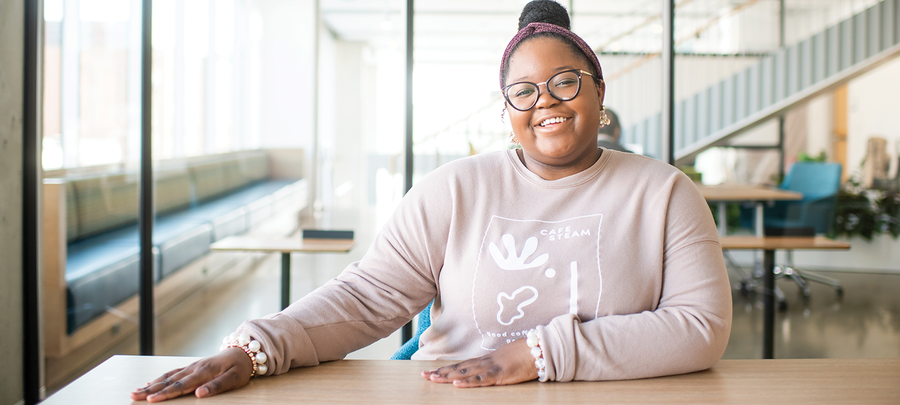
Steps toward a better world
Krysjahn Johnson knew from a young age that she wanted to pursue a career in medicine, but she wasn’t sure how or where she’d do it. In high school, her plans become more focused as she delved into research from the Mayo Clinic for school projects. “Some of the research was really intriguing, and I wanted to be a part of it,” she says.
That interest led Johnson, who grew up in Tennessee and Indiana, to the University of Minnesota Rochester, where she’s majoring in health sciences with a minor in speech, language, and hearing sciences. She also works as a lab assistant at Mayo Clinic and serves as a UMR Ambassador, giving tours to prospective students.
In 2020, she was chosen as one of the first recipients of the University of Minnesota Scholarship in honor of George Floyd, established by U of M President Joan Gabel shortly after Floyd’s memorial service.
“I really appreciated that the president was willing to take those steps,” says Johnson. “Many times, when we have injustices in America, we wonder, ‘Is anyone actually going to do something about it?’ Beyond the money of the scholarship, beyond the assistance, it was nice to know that this tragic story was being acknowledged.”
Johnson plans to earn a PhD and eventually become an audiologist working with patients in a clinical setting. “The best thoughts and ideas are in a diverse group of people,” she says. “I hope to be a pioneer in making sure that there’s all different kinds of faces and bodies in every type of job. I think that will make America and the world, in general, a better place.”
Hear more about what the scholarship means to her.
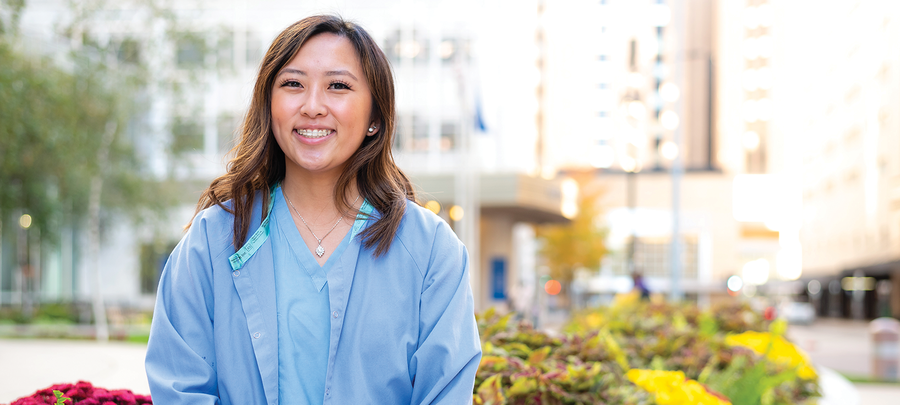
Alumni Profile: Sarah Vang
Sarah Vang '21 faced a critical moment in her Respiratory Care rotation this past spring when she helped care for her boyfriend’s grandfather who was admitted to the ICU with COVID-19.
“They always talk about keeping your personal life out of the workplace, and I tried to,” she says. “But at the end of the day, it was really hard to see one of my own in the hospital because of COVID.” Because family was not allowed in the room, Vang served a dual role as both representing family members and respiratory therapist—a role she has extended to many more patients she’s cared for during the pandemic.
“I’m really learning how to see everybody as a family member and be there because their family can’t be there for them.”
Time spent caring for her boyfriend’s grandfather was a pivotal moment in her studies, which had already led her down some unexpected paths on her way to becoming a respiratory therapist.
Originally from Brooklyn Park, Vang chose UMR “out of the blue. I had plans to go to another university—it was a last-minute switch over.” Her brother, a year younger than her, introduced her to UMR. The smaller size and health science and medical focus attracted her right away. She calls herself an introvert, somewhat shy, and she felt the campus community would be the best fit for her personality and interests. (Her brother followed her to UMR the next year.)
Vang started in the nursing track. She joined the newly-formed Rochester Hmong Student Association (RHSA) and helped plan a highly-successful Hmong New Year celebration on campus. She served in leadership positions, first as the community outreach board member and then two years as president of the student organization. It was a big stretch for a shy introvert. “That opened a lot of doorways and gave me a perspective on leadership—it really put me out there. I never thought I could do anything like that, knowing how quiet and introverted I am. I never thought I’d be able to stand in front of a group of students and act as an advocate and leader for them.”
Vang and her fellow association members established a strong working relationship with members of the Rochester Hmong community. During her last year as president, the student group worked with the local Hmong community leader and his executive team on ways the students could participate in helping them preserve Hmong culture and tradition within the Rochester Hmong community.
Shanna Altrichter, sociology faculty in the Center for Learning Innovation, has served as advisor for the RHSA since it started in the fall of 2016. She observed first-hand the empathic and creative leader Vang grew to be, and how the group flourished under Vang’s leadership.
“Sarah felt strongly about supporting other members in RHSA and was an excellent listener regarding what sort of activities they wanted to host or participate in, or what their needs or experiences on campus were. While she was president there was a large increase in various efforts to reach out and connect to other Hmong student associations across Minnesota. She and the other board members of RSHA were very creative and tenacious in how they made and supported these connections, even going to events at St. Catherine's in order to build a relationship with other student groups in the state.”
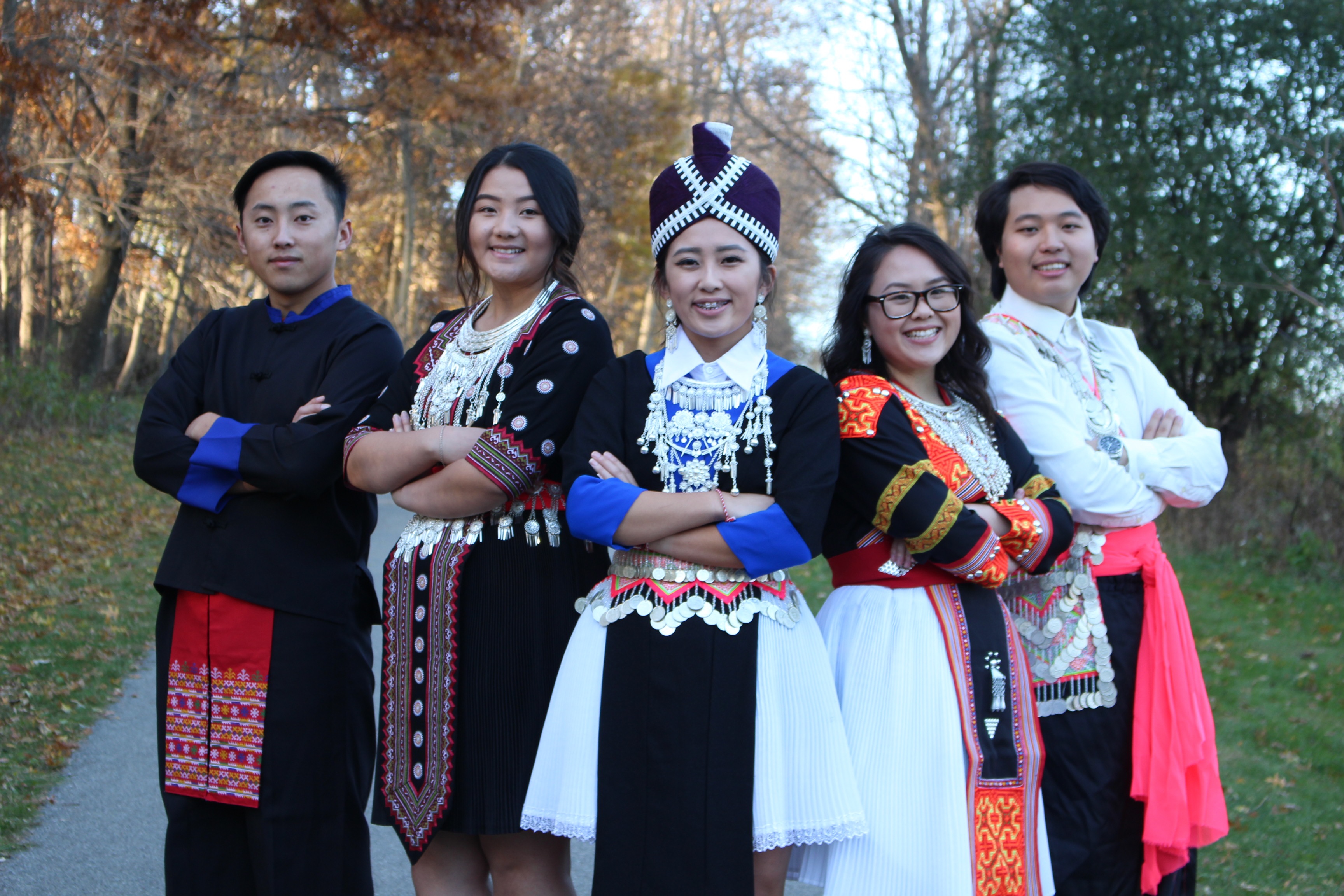
Altrichter also noted Vang’s remarkable work ethic. “Sarah and several other senior members took an independent study in Hmong history to further their knowledge about the Secret War and how their families came to be part of the Hmong diaspora. Sarah worked hard to share that knowledge with other club members and also was seemingly tireless in her efforts to make sure the various events the club hosts on campus, like Hmong New Year, were successful. Sarah is an extremely hard worker and that is evident not only in the work she did helping organize events through RHSA but also in her work in the classroom.”
Despite her strong work ethic, Vang soon found that the nursing program was not right for her. She was put on academic probation for one semester and faced with telling her fellow students in the RHSA that their president was struggling. “It was really hard,” she recalls, “but I actually sat my group down and told them about how I had failed two courses and ended up on academic probation.” She risked being vulnerable and open, she says, especially challenging in a student organization “with a lot of students who may not be very open about personal things like this or things that make their time here hard.” She hoped that, by being open, she could inspire other students to know they would be heard and seen, to open up. It worked. “After that, I could see students being more comfortable with me.”
She took a hard look at her future career path and decided to leave the nursing track.
It was a difficult transition: She had entered college wanting to be a nurse, and that was all she had planned for. But she followed her instinct and applied to the respiratory therapy program. Her parents were concerned by this switch, especially because they did not know much about the program, but, Vang says, “I had to stay confident in my decision so they could be at ease.” The respiratory therapy program turned out to be the perfect fit for many reasons. Not only was she interested in the work, but she could continue being of service to her Hmong community. “It (respiratory care) wasn’t really well known in the Hmong community. I realized I could teach more people—not just in the Hmong community but in the larger community—about respiratory diseases and other diseases around it and be an advocate.”
That kind of service soon proved to be much more vital than anyone could have foreseen.
Vang started the program in 2019 and had one full year of training before COVID-19. In the midst of a global respiratory pandemic, the world’s need for respiratory care and education exploded.
Vang graduated in 2021 (along with her younger brother who first told her of UMR) and was soon hired as a respiratory therapist at the U of M Medical Center in the Twin Cities. She is currently completing her orientation, which includes general care, intermediate intensive care and ICU training.
There is no “typical” day. “It changes all the time,” she says. She may see anywhere between 7–16 patients in a day. To some, she gives breathing treatments that may involve medications to open the lungs and help break down mucus. She may administer chest physiotherapy to help loosen mucus in the lungs as well. Depending on how critical the situation is, she may start a patient on a breathing machine to give oxygen support and additional breathing medications. If a patient is critical in the ICU, she will check the patient’s breathing machine every four hours to monitor how the patient is progressing, how much air they inhale and exhale, the speed and the oxygen saturation levels. With very critical care COVID patients she also practices proning—moving the patient onto their stomach for a period of time to increase the aeration throughout the lungs, then moving them onto their backs.
She advises all people to care for their lungs by not smoking or vaping. COVID-19 education is also critical. “I always hear a lot in the Hmong community, people will wait until they are critical before they actually go to the hospital to get seen because they’re afraid that once they go to the hospital they won’t go back out. You need to go early so they can treat you early, so your chances of coming out are much higher than if you wait until it’s critical and it’s done a lot of damage to your lungs and there’s not much we can do.”
COVID has brought respiratory care to the forefront, Vang says. “There’s a long way to go for respiratory care, I believe, in terms of educating the communities about what it is and exposing students to this career. I definitely see a need for more respiratory therapists.” ■
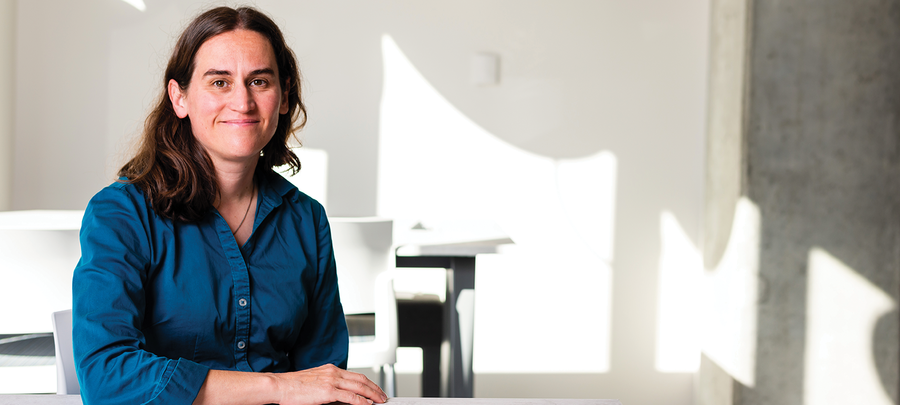
Faculty profile: Molly Dingel, PhD
More than a decade ago, Professor Molly Dingel took a leap and joined the burgeoning University of Minnesota Rochester campus.
Professor Dingel was one of three starting faculty who helped design the initial curriculum for the first incoming class. Altogether, five faculty, plus post-docs and teaching specialists, served as instructors to welcome the first incoming class to the Bachelor of Science in Health Sciences program in Fall 2009.
UMR’s focus on innovation was a primary draw for her, as was the dual emphasis on both teaching and research. “Oftentimes, if you go to a school focused on teaching, it’s hard to do research. UMR was unique—it values teaching and made time for people to do research.”
The campus was the result of work by a very dedicated group of people in Rochester who had been working since the mid-1970s to get a four-year institution in town. Dingel notes that this groundswell of community support means the “town verses gown” divide—the tension between town population and campus population—does not exist in Rochester. “The relationship here is different. The strong support of the community is unique.”
Community is essential to Dingel, as her research focuses on a sense of belonging. As a sociologist, she thinks a lot about what it means to be part of a group—or not. This sense of belonging, she says, is especially important for people to be successful in college and persist through to graduation. “College is hard. You’re being asked to do difficult things. To do that, you need a lot of social support. My research re-emphasizes the importance of relationships. Peer-to-peer, faculty-to-student. A central challenge is how you build those.”
Research in this area has shown that a classroom can be a challenging place to build faculty/student relationships because it’s often a more formal environment. “Even if there’s interaction, small group work, it’s not a replacement for sitting down one-on-one with somebody and having a conversation about content, which then leads to more conversation,” says Dingel. At many institutions, she notes, students don’t come to office hours, making one-on-one conversations more challenging.
“UMR is a little different, I think.”
As she studies how UMR students feel a sense of belonging—the characteristics, challenges, and what might undermine it—Dingel sees the ways UMR has intentionally fostered relationships and created multiple venues for students to experience a sense of belonging. Living Learning Communities help build peer relationships, as do annual events like the Halloween celebration. “At the costume competitions, seeing how students are engaged—expressing themselves creatively with amazing and creative costumes, cheering each other on—is really a lot of fun. It shows the dedication and creativity of students.”
JustASK Hours are a prime example of an effective way to build relationships between faculty and students, says Dingel. Students and faculty work side by side in large rooms, facilitating casual questions and conversations. “That really helps break down a barrier between faculty and students, and creates a culture where you can talk to your faculty. Once that gets set up, it’s easier for students to do that. I see people getting a lot out of it.”
She also loves the smaller class size at UMR. “Students are really engaged. They’re game for stuff. If you ask them to try something weird in the classroom, they’re into it. For the teacher, that’s really great.”
Once those relationships are built, they don’t just end with graduation. In many ways, Dingel says, her most meaningful experiences with alumni are everyday, ordinary interactions seeing someone in her office or the hallway, stopping to have a short conversation. “Former students still feel they can connect with faculty members through email, checking in, or dropping by campus. If they felt that sense of community [while they were in school], it’s much easier to continue that.”
Over the last 12 years, enabling those relationships has built a campus that has “changed a ton,” Dingel says. But despite hiring more faculty and staff, developing more curriculum, and attracting more students, the program still retains and fosters that sense of innovation and community.
“There’s more diversity in the way we’re trying things, and a more diverse student body,” says Dingel. “UMR has had to change and shift to try and meet the needs of students. We’re still building, very much.” ■
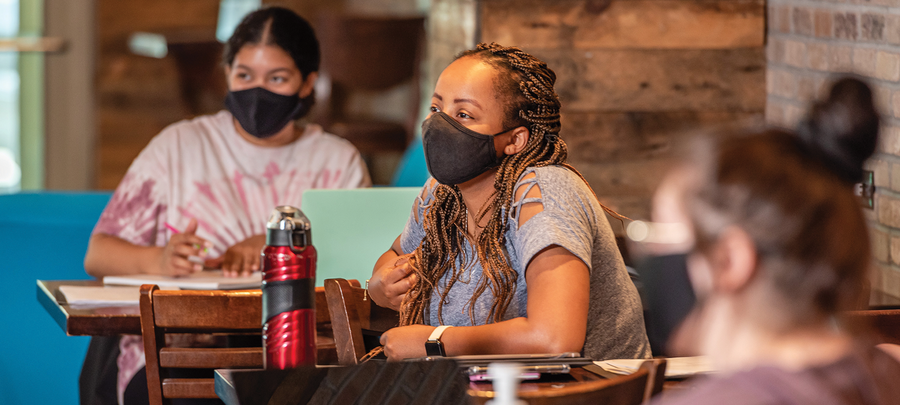
Future Raptors Find Their New Home at UMR
The Office of Admissions worked diligently to welcome UMR’s 13th incoming class, which this year comprises more than 200 students in the Bachelor of Science in Health Sciences and Bachelor of Science in Health Professions programs.
Recruiting in the midst of a pandemic was challenging, since COVID-19 limited travel opportunities and campus visits. In fact, 21 percent of UMR’s incoming class is made up of out-of-state students, many of whom only stepped on campus for the first time when they moved into 318 Commons.
Our new student cohort includes UMR’s first freshman class of Early Assurance Respiratory Care students, who enter with guaranteed admission to the Bachelor of Science in Health Professions program.
Finally, we are #UMRProud of our commitment to serve underrepresented communities. The fall 2021 class includes 42 percent students of color, and 70 percent of the incoming class identifies as underrepresented, meaning they are first-generation, students of color and/or low-income students.
The Office of Admissions is already working hard to recruit future classes to the University of Minnesota Rochester. We understand and appreciate that you as alumni do some of our most important recruiting as you share your UMR experience with others.
Please don’t hesitate to reach out to the Office of Admissions with recruitment suggestions or to connect us with Future Raptors!
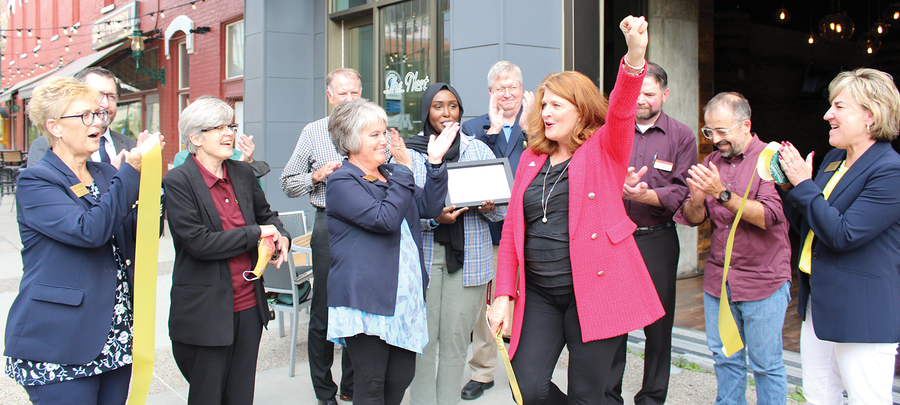
Dear Raptors
In this extended time of disruption, I am hopeful the stories from the UMR community that we’ve featured in this second edition of The Kettle will be a source of strength for each of you.
Just for fun, here are a few updates from your alma mater:
Public Health
We were delighted to return to campus for in-person instruction in September. I’m pleased to share that
we have high compliance with our vaccine and mask mandates. Together, students, faculty and staff are making our campus as safe an environment as possible.
Enrollment Increase
UMR continues to grow, with 974 students enrolled for fall 2021. We’re moving rapidly toward our Bold goal of 1,000 students, with Bolder (1,500) and Boldest (2,500) still ahead.
New Facilities
What was previously The Loop restaurant on the street level of 318 Commons is now The Nest (pictured upper right and on page 21), a gathering space for UMR students. The second floor is now a remodeled home to the Center for Learning Innovation, with faculty offices and multiple, light-filled spaces for student and faculty interaction. The project was supported by the City of Rochester with designated sales tax dollars (thank you, Rochester!). We invite you to visit these new UMR facilities.
Raptor Reconnect
Students, faculty and staff reconnected with a party at the Mayowood Stone Barn (pictured lower right) on the first day of class, a perfect outdoor setting for a safe and fun launch to the fall semester.
Parent & Family Connections
The pandemic era has raised our awareness of the importance of families as part of the UMR community. Our October “Parent and Family Weekend” brought a record number of family members to UMR for fall fun, with a history tour, trips to Quarry Hill and the orchard, and some unusual entertainment from a comedian/juggler!
Anti-racism Action Plan
We continue to move toward key actions, including establishing a Truth, Racial Healing & Reconciliation Center with support from the Association of American Colleges and Universities (AACU).
Book Release
The UMR Vision includes an aspiration to transform higher education. In support of that aim, a co-
author and I just released Communicate for a Change: Revitalizing Conversations for Higher Education.
NXT GEN MED – Innovation Emerging from Disruptions
In partnership with Google Cloud and supported by Mayo Clinic, UMR innovators are designing an
accelerated, high-tech, high-touch, industry-integrated new approach to delivering the BSHS degree.
The pilot will launch in August 2022. We are imagining that the first cohort of NXT GEN students will be
trailblazers, just like those of you in the who began your UMR journeys in that first fall of 2009.
We’d love to hear your updates, too! Please stay in touch.
With continued pride for your resilience and accomplishments,
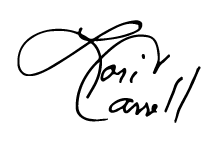
Chancellor Lori J. Carrell, PhD
